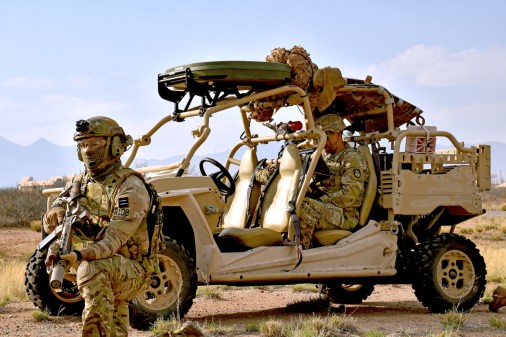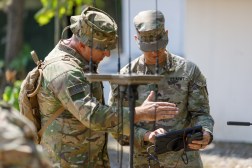Army signs digital engineering policy to enhance weapon system development

The Army is set to release a new policy Tuesday dedicated to increasing the pace of its weapon systems development through digital engineering techniques, with plans to designate a handful of programs as initial pathfinders to inform the service’s overall adoption.
Signed by Undersecretary of the Army Gabe Camarillo, the new directive also includes three commodity focus areas that will allow the service to concentrate its initial efforts to adopt digital engineering tools more broadly.
During a keynote speech Tuesday at AFCEA NOVA’s DOD Enterprise IT Day, Camarillo emphasized that digital engineering will be the new standard in how the Army develops and sustains its capabilities.
“It enables our ability to identify requirements tradeoffs earlier in the process, to plan more adequately for sustainment of both hardware and software,” he said. “It identifies cost drivers in the operation of weapon systems in the future, and it helps us to identify and mitigate technical risks through more robust modeling and simulation and the development of digital twins.”
Digital engineering uses advanced modeling, simulation and data analytics to design, analyze and advance complex systems at all lifecycle stages — from early development of new prototypes to sustainment of already fielded platforms. Because it is widely adopted in the private and commercial sectors, many of the Army’s programs are already utilizing the techniques today.
Now, the service wants to standardize and streamline digital engineering practices throughout the Army via four lines of effort outlined in the new policy.
The first will be to designate three unique focus areas — ground vehicles, aviation platforms and sensors — to act as “centers of gravity” for the Army’s digital engineering adoption. The department chose the commodity areas based on the high maturity level of digital engineering techniques already demonstrated for each capability, Camarillo said.
For example, the XM30 Mechanized Infantry Combat Vehicle (MICV) program — the Army’s effort to replace its M2 Bradley infantry fighting vehicle — is receiving digital engineering artifacts as part of its development. Similar digital design work is being executed in the service’s Future Long Range Assault Aircraft (FLRAA) effort, he noted.
“We are looking to benefit from that utilization of digital engineering tools to be able to help establish the right processes in the Army, the right training, and how we adapt our institutional approach to be able to accommodate more digital engineering,” Camarillo said.
Another line of effort will have the department identify a handful of efforts to serve as pathfinder programs. The pathfinders will represent the range of the development cycle to fully understand how digital engineering can be adopted at all stages — from using digital environments to conduct early design of new systems to creating new digital twins of legacy programs to better inform sustainment efforts, he added.
“The goal here is to think about how do you change our processes. If you’re doing a preliminary design review of a system in development, or if you’re doing the need to identify cost-driving parts for a legacy system, how do you get after that?” Camarillo said.
In addition, the Army plans to develop implementation standards to ensure interoperability through another line of effort. Rather than license one or two digital engineering tools, the service wants to take a “commodity-focused approach” and interface with the entire vendor base developing digital engineering tools. This will allow the service to “focus much more on what are those standards — focused on things like interoperability and cybersecurity, for example — to be able to understand how we can work with those teams to help evolve those capabilities and those standards over time,” Camarillo said.
That means the Army will need to standardize its approach to contracting so it can effectively communicate to industry the exact digital engineering tools it needs, he added.
The final line of effort is dedicated to developing the Army’s workforce and ensuring they have adequate training to execute on the new policy. The service also plans to work with industry and conduct “talent exchanges” to permeate best practices from both the private and public sectors over time, Camarillo noted.
While the digital engineering policy is a critical step in the Army’s digital transformation efforts, Camarillo emphasized there is still work to be done to ensure its effectiveness.
“We know that we have to continue to modernize IT infrastructure across our posts and stations, and we’re looking for effective and creative ways to do it. We also know that our tactical network remains a significant challenge,” he said.






